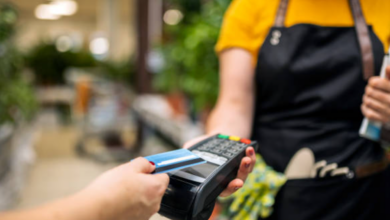
It’s a volatile proposition. But it’s one that has the potential to make trading interesting if you understand how this market works, and you know that with the highs come the lows.
To help you, here’s a guide that’s designed to demystify crypto trading.
Understanding crypto trading
Unlike traditional stock trading, which takes place within a regulated environment and during specific hours, crypto trading operates 24/7 on a global scale. Most cryptocurrencies are decentralised, so they’re not governed by any single entity, making the market highly volatile. Also, these cryptocurrencies use blockchain, a digital ledger that’s designed to keep the coins secure.
Key concepts in crypto trading include:
- Trading pairs: Like forex trading that deals exclusively in fiat currencies, cryptocurrencies are traded in pairs, such as ETH/BTC (Ethereum to Bitcoin). There are crypto and fiat currency pairs too, such as BTC/USD (Bitcoin to US Dollar). Understanding these pairs is crucial as they determine how you can exchange one currency for another.
- Market orders: These are buy or sell orders executed immediately at the current market price. They are straightforward but can be risky in highly volatile markets.
- Limit orders: These allow traders to set a specific price at which they are willing to buy or sell. This strategy can help manage risk by ensuring you do not buy at too high a price or sell too low.
The volatility of the crypto market is a double-edged sword. On one hand, it offers substantial profit potential; on the other, it can lead to significant losses. Successful trading requires a thorough understanding of market dynamics and a keen eye on global economic trends.
Choosing a trading platform
Selecting the right crypto trading platform is important. There are a lot to choose from and there are certain considerations to make before you settle on one.
First, you’ll need to check how secure the platform is. Does it have two-factor authentication (2FA)? Check to see if it has cold storage of funds, where your private crypto keys are transferred to a medium that’s not connected, such as a USB drive.
Additionally, how accessible is it? A user-friendly interface can make trading less stressful and more efficient.
Check to see how varied the trading pairs offered are. Some platforms support a wide range of cryptocurrencies, while others focus on a smaller selection.
Developing a trading strategy
Creating a successful trading strategy involves a combination of research, risk management, and adaptability. There are some popular types to choose from.
Day trading is where you buy and sell within a single day to take advantage of short-term market movements. You’ll need to be attentive and have a good understanding of technical analysis if this is the strategy you go with.
Swing traders, on the other hand, hold positions for several days or weeks. They aim to profit from expected upward or downward market swings.
Regardless of the strategy, staying informed about market trends is essential. Follow credible sources for the latest news and analysis. Additionally, use any trading tools available via your platform to track market movements.
Staying safe
The decentralised nature of cryptocurrencies makes them attractive targets for cybercriminals. You can use hardware wallets to store large amounts of cryptocurrency offline. For daily trading, consider reputable software wallets with robust security features.
Also, enable 2FA on your trading accounts to add an extra layer of security and be cautious of phishing emails, fraudulent schemes, and too-good-to-be-true offers. Always verify the authenticity of websites and offers before engaging.
Be aware of the regulatory environment in your region too. In the EU, MiCA is the new regulation around trading crypto to be aware of, but there are new rules being introduced globally.
By understanding these key details, you can better navigate the complexities of crypto trading.








